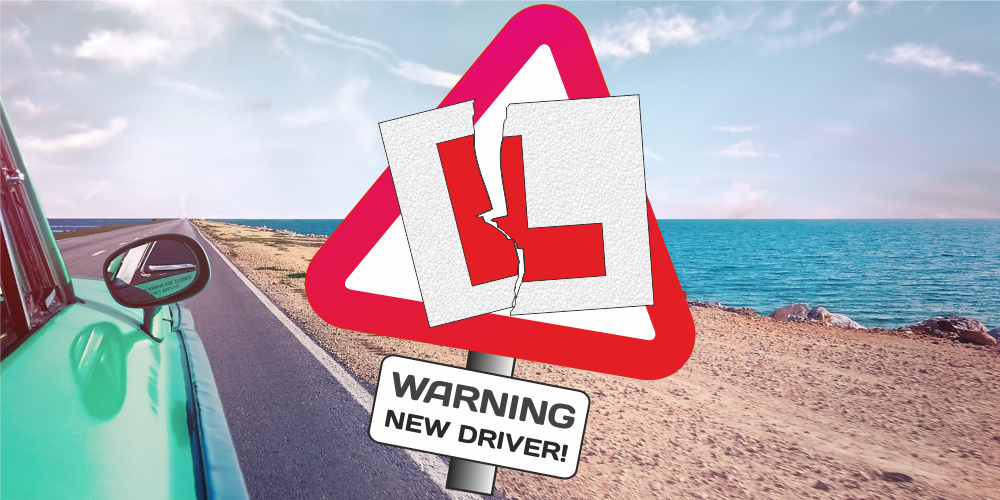
 If you are looking at this section after you have passed, Big Congratulations and celebrations for two reasons:
If you are looking at this section after you have passed, Big Congratulations and celebrations for two reasons:
Because you have passed
Because you are starting a brand new 'life journey'!
Passing the driving test is a significant milestone and a day that you will remember for years to come - but like everything else in life, there is always more to learn.
The key to a lifetime of safe and economical driving lies in continuing to take an interest in your new skill - this doesn't mean that you have to go on courses, although there are lots of courses out there aimed at qualified drivers, including eco-driving, winter driving, better driving, advanced driving, skid pan driving, off-road driving and more besides.
But it is worth keeping up to date with the Highway Code and watching for road safety adverts and news articles. Some drivers get fines and penalty points simply because they don't know the latest rules.
This final lesson covers some of the things covered on the 'Pass-Plus Course' - if you haven't already booked a course, you can get info. from .gov.uk.
If you want to become a better driver, you could also look at the Institute of Advanced Motorists or RoSPA Advanced Driving websites.
Whether or not you take further training or gain additional qualifications, remember that no matter how good you think you are now, you can always get better.
And a confession from the author of this course…
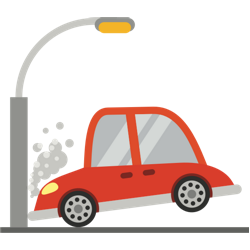 I have been driving for over 50 years - when I passed my test, I thought he was the best driver in the world (obviously!).
I have been driving for over 50 years - when I passed my test, I thought he was the best driver in the world (obviously!).
I then went on to crash six cars and a lorry in my first two years behind the wheel. In total, across all the crashes, there were eight cars, a bus and the lorry written off.
I was lucky to live and tell the story. Sadly, many new drivers are not as fortunate as me.
I've now spent around 44 years helping other drivers avoid the same mistakes I made.
Keep on learning. And who knows, you might even become a driving instructor yourself!
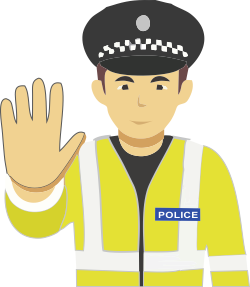 After passing your test, you are on two years 'probation'. During this time, if you collect six points on your driving licence, you will get an immediate driving ban and have to retake both the theory (+HPT) and practical tests - the court could require you to take an extended test lasting 70 minutes!
After passing your test, you are on two years 'probation'. During this time, if you collect six points on your driving licence, you will get an immediate driving ban and have to retake both the theory (+HPT) and practical tests - the court could require you to take an extended test lasting 70 minutes!
But it doesn't stop there:
It will be more difficult to get car insurance
The points remain on your licence for the statutory period
You could face a heavy fine or even prison for some driving offences
Speeding is a simple example of how easy it would be to lose your license.
A fixed penalty speeding offence carries three points, so two speeding tickets could end your licence! But a court can issue six points for a single speeding offence + a fine of up to £2,500!

You must also make sure that you are properly insured.
One of the factors that insurers consider when setting insurance policies is the 'main driver' of the car.
If you are the primary driver of a vehicle but have tried to save money by having it insured by a parent or older person, you will be breaking the law and driving uninsured. This is often referred to as 'fronting'.
Potential consequences of insurance fronting for a parent could include:
prosecution for fraud and a criminal record or prosecution for allowing a vehicle to be used uninsured
a fine
6-8 penalty points or a driving disqualification
the risk of having the car destroyed
invalidation of the policy and any claims- the insurer could refuse to settle a claim
the insurance provider would be legally liable to cover third-party claims but could sue you to recover the costs
significantly higher premiums in the future
the implications of a criminal record - including damage to your reputation that can affect employment and lead to higher costs for other financial products
Potential consequences of insurance fronting for a young driver could include:
The insurer could cancel the policy, leaving the driver without any insurance cover. They would then be driving 'uninsured' and therefore potentially face:
prosecution for fraud and a criminal record or prosecution for using an uninsured vehicle
a fine
6-8 penalty points or a driving disqualification (automatic disqualification for a new driver)
significantly higher premiums in the future
implications of a criminal record - including higher costs for other financial products
having to retake the theory and driving test for exceeding the six-point new driver limit
Ensure you understand the categories on your driving licence and what you are entitled to drive.
Double-check that you are fully licensed before driving a van or towing a trailer. You can find all you need to know about your driving licence here.
Also, ensure that you are fully insured if you drive someone else's car - your insurance policy might not cover you. If in doubt, check with your insurers or brokers.
 Do you remember that earlier in this course, we said that after an accident, you would hear lots of people say things like:
Do you remember that earlier in this course, we said that after an accident, you would hear lots of people say things like:
This is especially the case in built-up areas, where most accidents happen.
Now that you have passed your test, you will have nobody sitting next to you to help if another driver fails to see you or another car comes from 'nowhere'.
From now on, you are on your own.
But this is good news!
After all, you've been waiting for and working towards this moment. And if you continue to follow the advice given in this course and by your instructor, you should stay safe behind the wheel.
Driving alone starts right here!
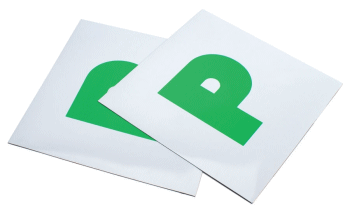 For many drivers, their first solo drive will be in town, but it's essential not to be over-ambitious the first time you go out driving alone.
For many drivers, their first solo drive will be in town, but it's essential not to be over-ambitious the first time you go out driving alone.
Choose a route that keeps you within a 15-minute walk from your home or destination; that way, if you feel uncomfortable, you can park the car and walk.
Driving alone means NO PASSENGERS on your first drive.
Making your first few miles passenger-free will allow you to concentrate on driving and boost your confidence.
Ideally, choose a quiet time for your first drive alone – early Sunday morning would be ideal for a longer drive. If you can't wait that long, at least avoid the rush hour and limit your first trip to about twenty minutes, especially if there is heavy traffic.
If you feel a little nervous, remember that your instructor and the driving test examiner, both driving professionals, think that you are ready - otherwise, you would not have reached this point.
Take your time, take it easy - and take your phone, just in case the nerves get too much! You might also consider fitting 'P' plates to show that you are a new driver.
If you live in Northern Ireland, you must also remember to display R plates for twelve months and keep to the 45mph speed limit for new drivers.
Enjoy your first drive alone - and remember that although you have come a long way on your 'learning to drive' journey, the learning process hasn't stopped - and never will! You reached this point by demonstrating that you can drive safely and make good decisions, and that's how you'll survive your next 30, 40 or 50 years on the road.
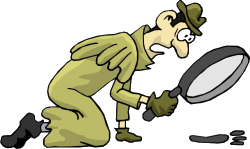 Be a driving detective when driving alone!
Be a driving detective when driving alone!
Remember all you have learned about defensive driving?
Earlier in this course, we gave an example of how you can be a driving detective. Here is another similar example: the hazard is in town this time.
A simple example of anticipation (or detective work) would be your reaction to road signs.
For example, what do you expect when you see a 'school' sign on a strange road?
If you have a good sense of anticipation, the first thing you might consider is the time. What time do children travel to and from school?
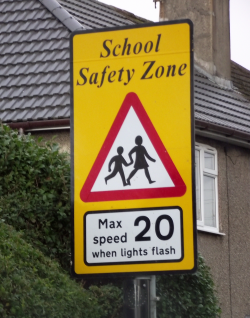 You might also expect mothers with toddlers meeting children from school, so be careful when passing parked cars.
You might also expect mothers with toddlers meeting children from school, so be careful when passing parked cars.
Are there buses around? If so, there could be children crossing behind them.
These are examples of the hazards you might expect near schools. Can you think of any more?
By being prepared for any eventuality, you will be less likely to be taken by surprise. This is essential advice for drivers anywhere, particularly in towns and city centres – and especially when you are driving alone for the first time.
Drivers who don't concentrate or who fail to maintain proper observation and anticipation will not even see the sign let alone consider the consequences.
Remember, now that you have a solo detective's licence, it's more important than ever to keep looking for clues.
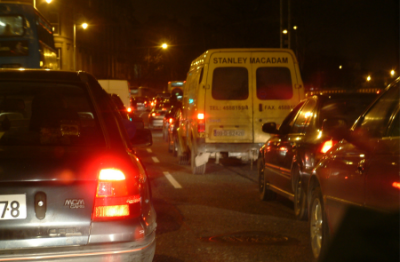 Some people think driving at night is safer because it is easier to see approaching traffic. In some situations, this may be correct - but there are many things you can't see at night.
Some people think driving at night is safer because it is easier to see approaching traffic. In some situations, this may be correct - but there are many things you can't see at night.
What you can see will be limited by the beam of your lights or the street lighting. This means you will probably need to drive more slowly at night, especially on country roads.
Always drive at a speed from which you can safely stop if you see something in the beam of your headlights.
The law states that you must use your lights between sunset and sunrise - you must use headlights on roads that do not have street lighting (we suggest that you use dipped headlights as a minimum on all roads, whether or not they are lit).
Clean windows and mirrors are critically important at night when you have to get as much information as possible from what little light is available.
Make sure your lights are also clean, so you gain maximum benefit from them and others can see you without as much dazzle. Crazy as it seems, dirty lights cost money because you are not getting the light energy you paid for from the bulbs!
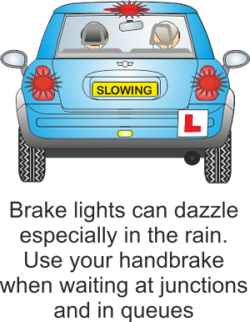 After around thirty minutes of driving on damp and dirty roads, your lights can give up to twenty-five metres less penetration - so it's a good idea to stop and clean them from time to time.
After around thirty minutes of driving on damp and dirty roads, your lights can give up to twenty-five metres less penetration - so it's a good idea to stop and clean them from time to time.
Never wear dark glasses when driving at night; they might cut dazzle but will dangerously reduce your vision.
When leaving a brightly lit building to go to your car at night, it takes your eyes a little while to adapt to the darkness; this can range from a few seconds to a minute or more.
Give your eyes time to settle before you start to drive. Similarly, when you drive from a brightly lit area into pitch darkness, your eyes need a moment to react – keep your speed down.
Driving after dark can pose particular problems when visibility is reduced by fog heavy rain or fog - in these conditions, your headlights can reflect light and create glare making it even more challenging to see.
Using dipped headlights, rather than full-beam, will help you to see better in fog.
Some countries, especially in Northern Europe, require dipped headlights to be used all the time and all (recent) vehicles now have daytime running lights*. Switch on dipped headlights as soon as the light starts to fade at dusk - it's never too early to switch on your lights.
*Some daylight running lights only operate at the front of the car. If you rely on them at dusk, you could be driving illegally.
Always use headlights on roads where there are no street lights.
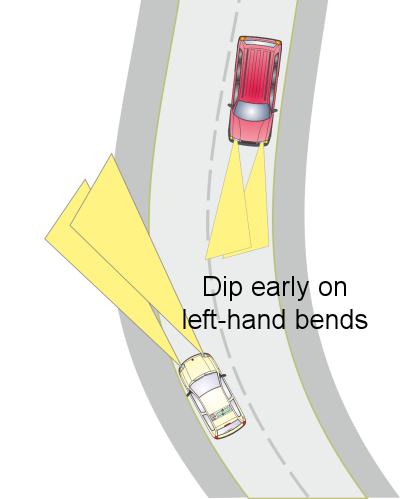 Driving on the open road at night, you shouldn't be able to see the colour of the car in front. If you can see the colour, you are either following too closely or using full beam when your lights should be dipped.
Driving on the open road at night, you shouldn't be able to see the colour of the car in front. If you can see the colour, you are either following too closely or using full beam when your lights should be dipped.
Keep your lights dipped when overtaking until you are at least level with the vehicle you are passing.
If the lights from the vehicle behind dazzle you, move your head slightly so that you are not in the direct line of the mirror.
Use the dipping mirror to reduce glare from following traffic; this is operated by a simple flick switch on the mirror itself (in some cars, it is operated automatically by a light sensor).
When you meet other traffic at night, dip your headlights. Do this as early as possible, even if the other driver doesn't dip.
Never try to deliberately dazzle another driver, no matter how much you think it is deserved. Two blinded drivers = double the accident risk.
If you are dazzled by approaching vehicles:
Slow down and stop if necessary.
Watch out for pedestrians or cyclists on your side of the road.
Avoid the dazzle by looking towards the verge (the edge of your side of the road)
You need to dip your headlights early on left-hand bends* because they will be shining directly at oncoming drivers. You can dip a little later on right-hand bends; this gives you a bit more view as you enter the bend. In the picture, the red car would need to dip before the yellow car.
*This is for countries that drive on the left - the opposite applies if you drive on the right.
If you break down at night, try to move your car off the road; use hazard lights and put out a warning triangle. Stay safe by parking carefully at night; if there are no street lights, leave your sidelights switched on. You must park on the left - unless in a designated parking position that allows you to park on the right.
You are also more likely to be tired when driving at night – if you feel tired, stop and take a break.
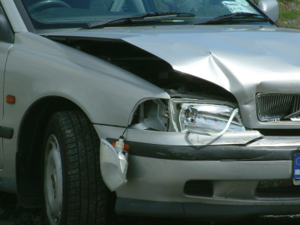 'There was such a mess … I just didn't know what to do.'
'There was such a mess … I just didn't know what to do.'
Many people are unprepared for accidents - they don't believe it will happen to them.
We hope that it will never happen to you, but if it does, the difference between knowing what to do or knowing nothing at all can be the difference between life and death.
One day you could be the first or the only person to arrive at the scene of an accident. Or you might be involved in an accident where others are injured, but you are uninjured. Would you know what to do?
This advice is basic and straightforward, but it can save lives.
Warn others: Park your car with hazard lights or headlights on, and use a warning triangle. Organise others to warn approaching drivers.
Reduce risks: Check the scene for danger, switch off engines, and impose a no-smoking ban. Wear a reflective vest (this should be part of your 'emergency' kit).
Get help: Send someone for assistance or use your mobile phone (999 or 112).
Assess injuries: The quiet casualties are probably the most badly injured. Reassure the noisy ones that help is on the way.
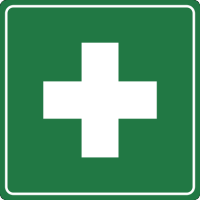
Don't move casualties unless there is further danger (fire, chemical spillage, etc.): you might cause further injury.
Don't remove motorcycle helmets.
Check for breathing: If the casualty is not breathing, clear the mouth (false teeth, chewing gum, sweets, loose teeth), very gently tilt the head back and, holding the nose, gently blow into the mouth at five-second intervals.
Stop any bleeding: Firm pressure on a wound will stem bleeding. Don't try to remove any item that has caused the bleeding.
Don't give anything to eat or drink: This can cause complications for
medics and delay life-saving treatment. Keep casualties warm with a coat or blanket.
Read The Highway Code for information about your legal duties when involved in an accident.
Find out more about accidents and emergencies in the Drivers' Area.
It's rare for drivers involved in an accident to be totally blameless.
In this course, you have learned about many potential dangers on the road and should be prepared.
Following the advice and information we’ve offered will make you less likely to become a victim on the road.
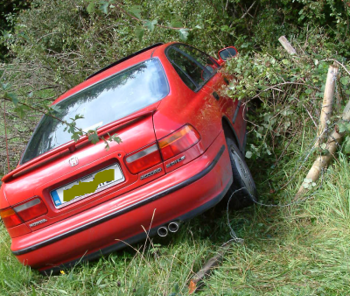 Common reasons for accidents include:
Common reasons for accidents include:
excessive speed for the conditions
failure to allow a sufficient safety space
not understanding the needs of others
drinking and driving
drugs (prescribed and illegal) and driving
tiredness at the wheel
Spending a little time considering the points above and how they might relate to you will increase your chances of living to a ripe old age.
By allowing a little more time for your journey or calling ahead to say that you will be late, you can avoid the excessive speed and risk-taking that kills so many people.
By leaving space around your vehicle and letting others overtake if they wish to, you will be more relaxed and safer at the wheel.
For example, when driving on the M25 motorway, you might have 100,000 vehicles ahead of you and 100,000 cars behind at any one time; a couple of extra cars in front won't affect your journey very much.
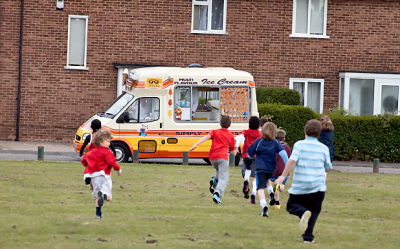
Learn to understand the needs of other road users.
Children often dash out without thinking;
Elderly pedestrians may be deaf or partially sighted and not hear or see you;
Older drivers might need more time to react;
Drivers of large vehicles need more time and space than car drivers;
Cyclists have wind and weather to cope with.
All of the above are easily undeerstandable. But sometimes you will meet other road users who are reckless and have little care for the safety of others, 'Idiots' should be avoided and forgiven, not confronted.
Dealing with 'idiots' is something you will never stop learning about! And remember that from someone else's point-of-view, you might be the idiot one day - just because you make a simple mistake.
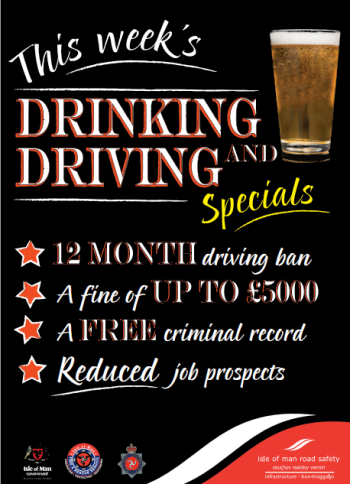
One of the quickest ways to kill yourself and your friends is to drink and drive.
It's funny how we feel invincible after drinking alcohol. But have you ever noticed how other people look stupid when they drink? Alcohol slows down your reactions (think of slurred speech). It warps perception.
Tiredness slows reactions and, in extreme cases, causes hallucinations.
Drugs act in different ways but create many of the same problems as alcohol and tiredness
The only safe rule is to not drive after drinking, taking medication or illegal drugs, or when tired.
If you must drive after taking medication, seek advice first (from a doctor or chemist) and take the utmost care.
Illegal drugs should always be avoided when driving.
The effects of specific drugs differ depending on how they act in the brain.
For example, marijuana can slow reaction time, impair judgment of time and distance, and decrease coordination. Drivers who have used cocaine or methamphetamine can be aggressive and reckless when driving. Certain kinds of sedatives, called benzodiazepines, can cause dizziness and drowsiness. All of these impairments can lead to vehicle crashes.
DriverActive is neither pro nor anti recreational drug use. But we are anti drug-driving big time.
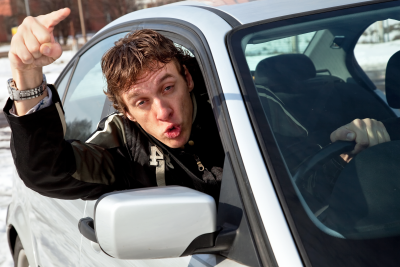 Road rage has been around for a long time. It was first recognised in the USA in the 1980s.
Road rage has been around for a long time. It was first recognised in the USA in the 1980s.
Around twenty-five years ago, it became noticeable in the UK and is now, unfortunately, becoming more and more common.
Sooner or later, you will meet drivers who cut in front of you, slow you up, overtake you on the left, swear at you whether or not you have made a mistake, or indulge in other anti-social behaviour.
One definition of road rage is 'unchecked behaviour designed to cause harm to another road user'; but often, the person committing the road rage is acting totally out of character.
Some drivers describe the 'red mist' which clouds their judgment. They get so angry they only concentrate on getting even with another driver. Sadly, drivers can all too easily be killed or injured when at the wheel in this state.
There are a few things that you might like to consider when thinking about road rage.
The 'rager' is someone you don't know and are never likely to meet again (unless it's in court or hospital)
Their actions are not a personal attack on you but rather an inability to cope with their own emotions
As a driver, it is not your job to enforce the rules or to teach other people a lesson
Many people are rude and thoughtless, and it's a comforting thought that they will only enter your life for a few seconds or minutes. They have to live with themselves forever.
If you are ever in a situation where you are angry with another driver, take a deep breath and ask yourself this simple question: "What do I really want?" When asking yourself the question, your expectation must be for something within your own control.
For example, answering: "I want to win the Lottery so that I don't have to drive to work" or "I want the other guy to be a good driver instead of an idiot" will just frustrate you further.
How about: "I want to be relaxed and safe"?
When you have answered the question "What do I really want?", think about what you are doing to prevent yourself from getting it. You can't change the other guy, but you can change how you respond.
If you want to be relaxed, you might have to ease off the power and let the other driver pull away; after all, do you really think the other driver cares about your feelings and concerns? You might need to pull up, get out of the car and jump up and down; if this is what it takes, do it - but make sure you do it on your own!
Avoiding anger on the road needs self-control and patience. Road rage is often just as bad for the 'rager' as for the victim.
In the next part of this lesson, there is a list of simple suggestions to help relieve stress when driving, which should help ensure you never 'lose it' behind the wheel.
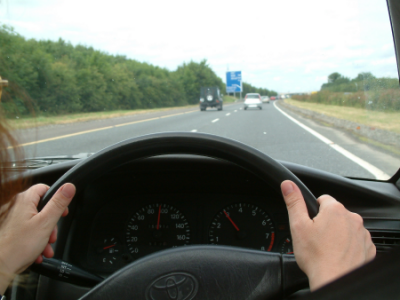 Now that you have learned the basics of driving, you can work hard to develop your skills over the rest of your driving life.
Now that you have learned the basics of driving, you can work hard to develop your skills over the rest of your driving life.
Having read about road rage, you will be aware that there is a possibility that you may need other skills on the road above and beyond the ability to drive.
Although the chances of a road rage attack are highly remote, the following points will help you to cope with the stresses and strains that some people perceive to be present in everyday driving.
By choosing to adopt the appropriate behaviour and taking the correct actions, you will find that driving can be stress-free and enjoyable.
Try to see the other driver's point of view. The car that has just 'cut you up' may well be driven by an idiot who doesn't deserve a driving licence. But it might just be that the driver is rushing to see a dying relative or to witness the birth of his first child.
If you make a mistake, hold a hand up to apologise; this often relieves tension for everyone concerned. After all, we all make mistakes.
Avoid eye contact with other road users who seem to be challenging or
aggressive.
Leave room between your car and the vehicle in front so you can drive away from a dangerous situation if someone approaches with criminal intent.
Keep your car doors locked, especially in towns. Keep your windows closed if someone approaches you on foot.
If you think you're being followed, drive around the block or a roundabout several times. It might just be that another driver was taking the same route and hadn't even noticed you.
If you know you are being followed, drive to a brightly lit place or a police station and make a lot of noise to draw attention to yourself. Try to get the number of the other vehicle.
Follow the advice given in this course and you will enjoy your motoring and the freedom and independence it gives you. Above all, you will drive safely, courteously and positively.
 Imagine that:
Imagine that:
the driver in front has been awake for 30 hours
the old man on the pavement is deaf
the cyclist is out for the first time on a new bike
the approaching vehicle has defective brakes and steering
the child on the footpath has a friend who is hiding...
AND - your front tyre is waiting to burst
Good driving doesn't rely on good luck - it's about good judgment.
Think defensively, be prepared, and you will stay safe and stay happy on the road...